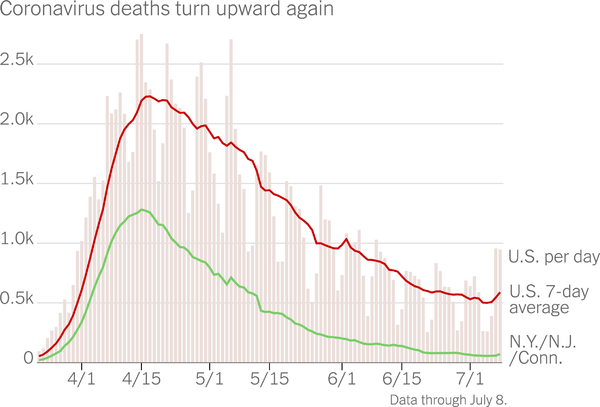The Washington Post had a great article about the fear and danger nursing home caregivers are experiencing because corporate management refuses to provide proper PPE, staffing, and training to prevent the spread of the coronavirus. More than five months into the pandemic, nursing home caregivers say they have been left to fend for themselves even as outbreaks continue to overwhelm facilities across the country. Tens of thousands of nursing home workers have contracted the coronavirus and at least 600 have died.
“There’s been a lot of talk about essential workers,” said Rob Baril, president of Service Employees International Union 1199NE, which represents nursing home workers in Connecticut and Rhode Island. “They’re treated like they’re expendable workers.”
Lawmakers, industry groups and caregivers say the death count could have been limited if the industry had done more to develop an early, robust and coordinated response for nursing homes and other long-term-care facilities. More than 2,200 nursing homes reported earlier this month that they lacked an adequate number of nurses, and 2,600 reported a shortage of nursing aides, according to the CMS.
Even with sufficient supplies, experts say, years of understaffing and cost-cutting have left nursing homes vulnerable to widespread infection outbreaks. Staff turnover is particularly high among nursing aides, who often earn minimum wage and lack paid sick leave or health insurance, said Charlene Harrington, a nursing home researcher and professor at the University of California at San Francisco.
“They don’t care if they burn through staff,” she said.
Government inspections found multiple instances where nursing staffs were stretched so thin, they did not have enough time to follow proper hygiene practices, such as washing hands in between patients. To address potential staffing shortages, the CMS in March waived the requirement that nursing aides receive at least 75 hours of training. The move, advocates say, could exacerbate unsafe conditions by allowing homes to employ unqualified staff members.



